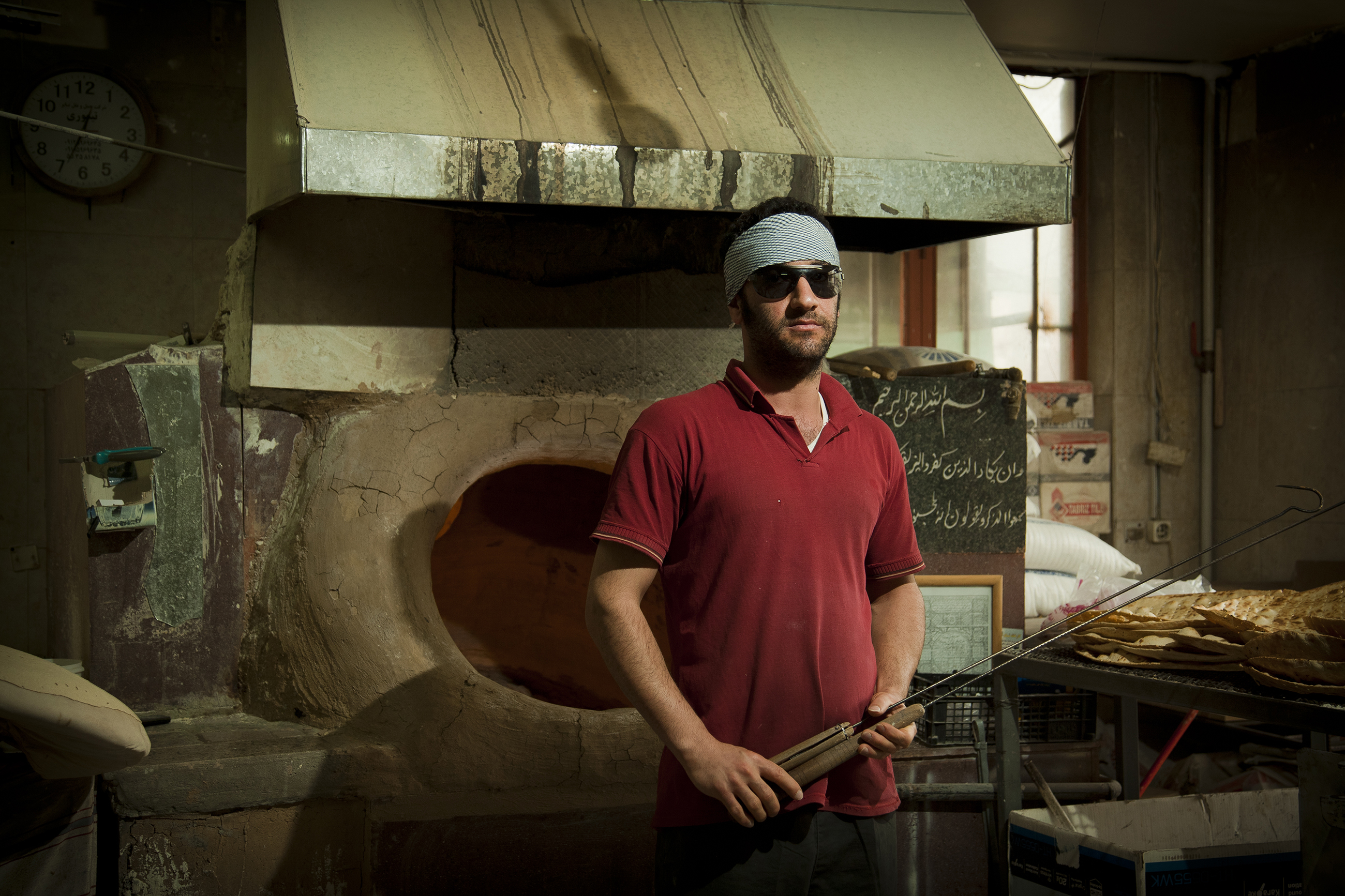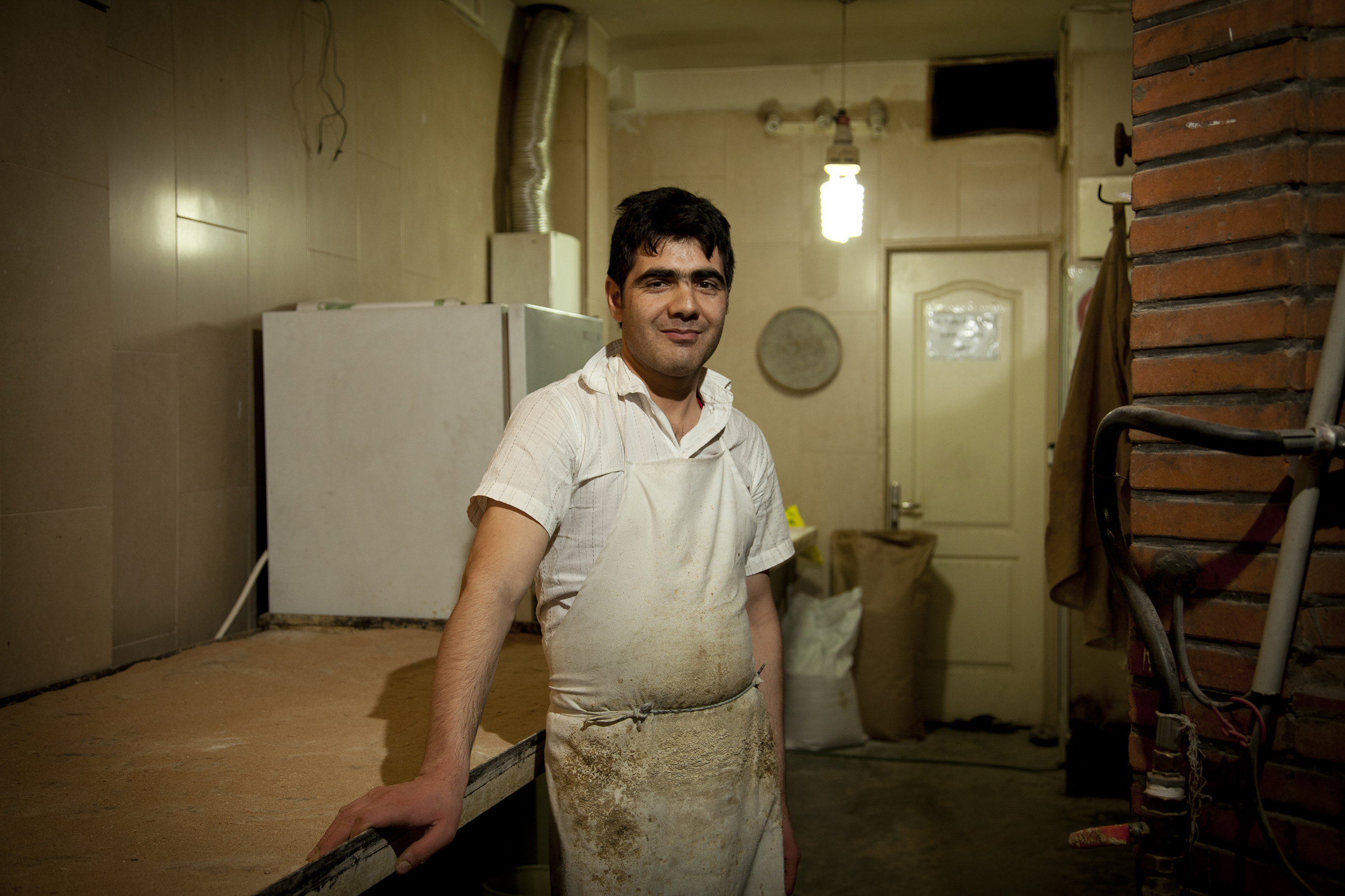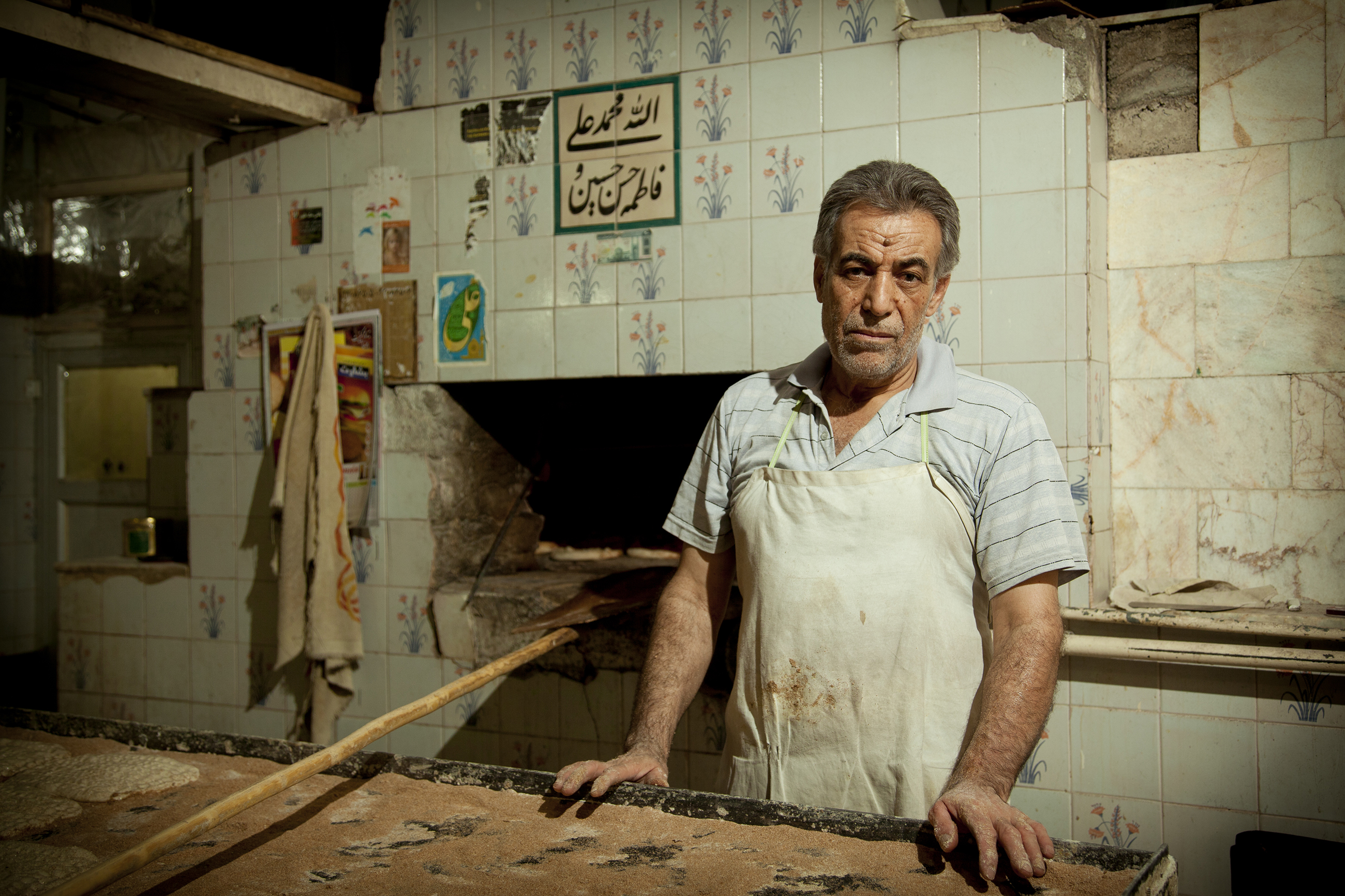Breads of Tehran
A short tour across rural and urban bakeries in Iran, each maintaining its own way of making bread.
The cuisine, cooking styles, and dietary habits of any region reveal multiple aspects about its communities who produce, cook, and consume it. This culinary fingerprint is akin to a microchip which will instantly yield much information about those living in that particular area. Nowadays, due to increasing global migration, food habits too are rapidly travelling around the world so that we often eat dishes in places which are very far removed and distant from the regions in which they originated.
Bread – one of the major staple foods – is also travelling across the globe, particularly in the Middle East where where we see a great diversity of bread in all kinds of flavors, colors, and shapes. Lavash bread commonly eaten across the region is prepared using white flour, being of very thin and soft consistency. The zaatar bread of Lebanon meanwhile is famous for its layers of spices, dry herbs and olive oil. Sangak bread is originally from Iran and made from whole grain wheat flour, its surface is studded with sesame or nigella seeds. This bread is baked in tanoor (a traditional oven) lined with small stones.
In Iran, every small town has a unique bread made with local products that visitors may buy as a souvenir. For example in Qeshm, a harbor located on the Persian Gulf, the locals bake a special bread called tamooshi, which has a structure akin to that of a crepe covered with a fish sauce created using a native fish. Other famous breads of Iran include fatir from Arak in Central Iran and pichkek of Kurdistan, a highland where grow unique mountain wild herbs that are used in baking this bread.
In today’s Tehran, you can find different types of bread with various flavors originating from all over the country, reflecting the arrival of communities from rural areas. Although some of these breads are prevalent throughout the Middle East, this bread series specifically seeks to identify and document the existing bread varieties in Tehran today. In the future, I hope someday I will be able to capture the various breads of the Middle East and how they function as significant cultural and historical markers of the region.
Lavash bread
Lavash is baked all over the Middle East. It’s made with white wheat flour.


Sangak bread
This bread is originally from Khorasan Province and nowadays it’s produced almost all over the country. It contains whole grain wheat flour.


Taftoon bread
This bread originally comes from nomadic people, but is more common in Tehran nowadays.




Barbari bread
This bread is baked in most Iranian cities, especially in the northern Azerbaijan province.








